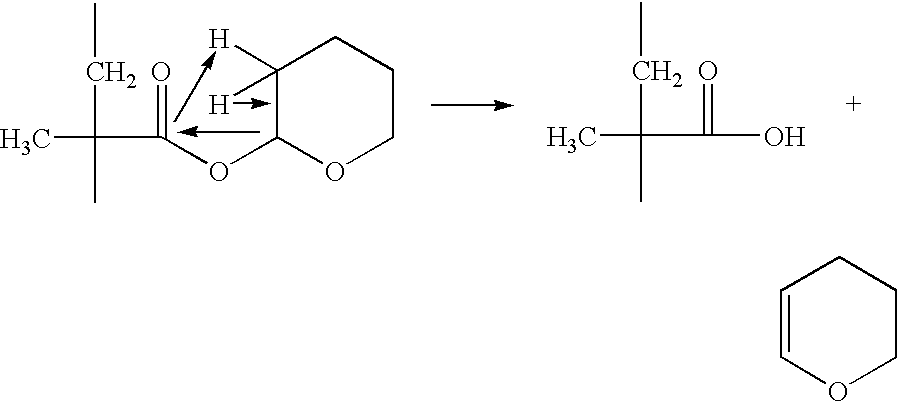Method for preparing a lithographic printing plate by ablation of a heat sensitive ablatable imaging element
a technology of imaging element and lithographic printing plate, which is applied in the field of ablative imaging element preparation of lithographic printing plate, can solve the problems of cumbersome and laborious working method, insufficient sensitive photosensitive coating to be directly exposed to laser, above mentioned, etc., and achieve enhanced durability, enhanced differential in wettability, and enhanced reactive polymer properties
- Summary
- Abstract
- Description
- Claims
- Application Information
AI Technical Summary
Benefits of technology
Problems solved by technology
Method used
Image
Examples
Embodiment Construction
1
An imaging element I was prepared by coating a 180 .mu.m thick aluminum sheet, having a grained and anodized surface, with a solution of a switchable copolymer (tetrahydropyranyl methacrylate / methacryloxypropyl-trimethoxysilane) in a monomer ratio of 90 / 10 by mol (0.35 g), and an IR-absorbing dye IR-1 (0.0365 g) in methyl ethyl ketone resulting in a themosensitive layer with a dry layer thickness of 1.8 g / m.sup.2. The optical density was 0.49. As a reference imaging element II was prepared with a heat-sensitive layer as imaging element I except that the switchable polymer was replaced by a novolac binder Alnovol SPN452.TM., sold by Clariant, Germany. The optical density was 0.25.
The plates were exposed on an ISOMET testbed equiped with a diode laser (830 nm) having a laser spot of 11.times.11 .mu.m.sup.2 at the 1 / e.sup.2 point. The plates were exposed at different image plane power settings at a drum speed of 3.2 m / s. The optical densities of the exposed areas were measured (Macbet...
PUM
| Property | Measurement | Unit |
|---|---|---|
| mol % | aaaaa | aaaaa |
| mol % | aaaaa | aaaaa |
| optical density | aaaaa | aaaaa |
Abstract
Description
Claims
Application Information
 Login to View More
Login to View More - R&D
- Intellectual Property
- Life Sciences
- Materials
- Tech Scout
- Unparalleled Data Quality
- Higher Quality Content
- 60% Fewer Hallucinations
Browse by: Latest US Patents, China's latest patents, Technical Efficacy Thesaurus, Application Domain, Technology Topic, Popular Technical Reports.
© 2025 PatSnap. All rights reserved.Legal|Privacy policy|Modern Slavery Act Transparency Statement|Sitemap|About US| Contact US: help@patsnap.com



